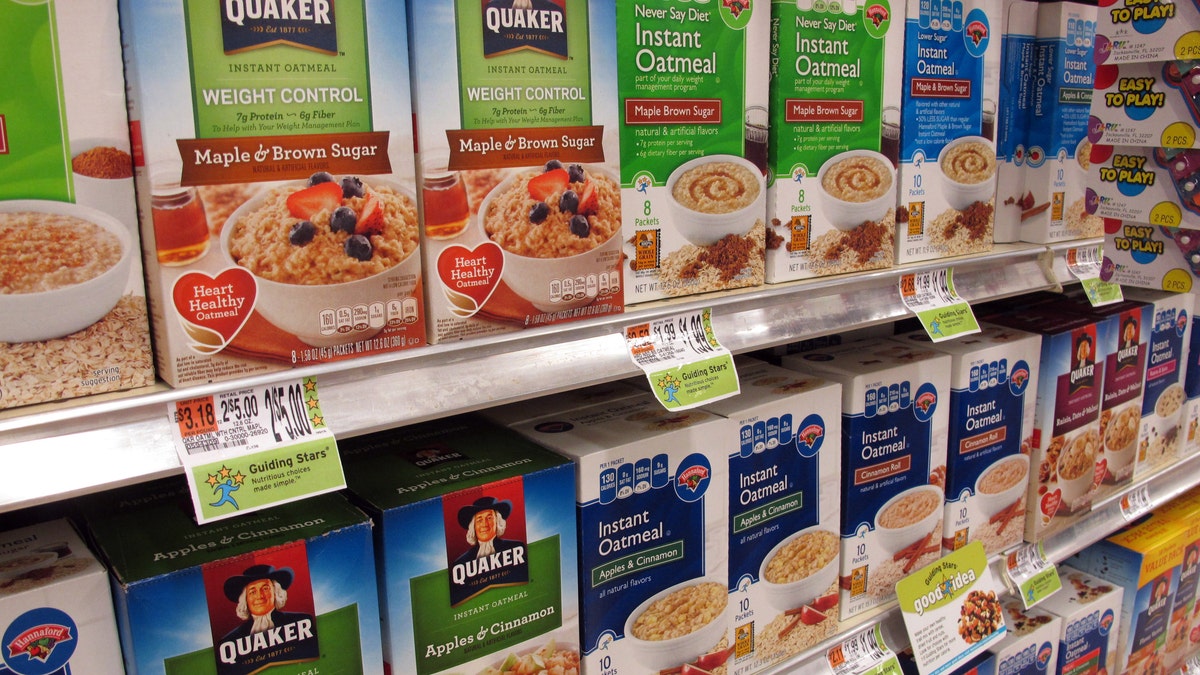
Hannaford stores feature the company's Guiding Stars rating system, as shown on price tags in the cereal aisle at a South Portland, Maine, store. (AP Photo/Clarke Canfield)
The 2015 Dietary Guidelines for Americans (DGA) were released January 7th. These guidelines are published every 5 years and provide key recommendations for how to achieve a healthy diet. Compared to 2010, there a few noteworthy inclusions and exclusions in the 2015 DGA as highlighted below.
New inclusions:
Limit saturated fat to ≤ 10 percent of calories and replace it with unsaturated fat
The 2015 DGA keeps the same recommendations for fat from 2010, including avoiding trans-fat and limiting saturated fat. The 2015 DGA specifies that in order to achieve the health benefits of maintaining this 10 percent limit, replace saturated fat calories in your diet (butter, cream, palm oil) with unsaturated (olive oil) or polyunsaturated (safflower, grapeseed and flaxseed oils). Previously, people replaced those calories with refined carbohydrates. This actually lowered HDL (good cholesterol) while raising LDL (bad cholesterol). Remember, what you take out of your diet is just as important as what you put in!
A specific limit of 10 percent for added sugars
While the 2010 DGA had general advice to reduce intake of added sugars, the newest revisions finally include a specific limit of 10 percent of daily energy intake. For a 2,000 calorie diet, this translates to approximately one 16-oz bottle of soda. A standard 20-oz bottle exceeds the limit. The DGA Committee recommends replacing sugar-sweetened beverages with water, not beverages with artificial sweeteners.
Caffeine
Caffeine was not mentioned in the 2010 DGA but is thoroughly discussed in the latest report. Caffeine is not a nutrient, however, experts acknowledge caffeine’s widespread use and recommend a daily upper limit of 400 mg. For context, a standard 8-oz cup of coffee contains anywhere from 95-200 mg.
New exclusions:
No limit on cholesterol
This is not to suggest dietary cholesterol is no longer important. Cholesterol is no longer listed as something to specifically limit to prevent cardiovascular disease (CVD). The newest science shows that saturated fat intake, not cholesterol intake, has a much greater impact on blood cholesterol levels, which are still considered a strong predictor of CVD risk.
Solid fat, refined grains and fiber are not included in the key recommendations
The new report’s key recommendations do not actually include the term “solid fat.” However, the relatively evolved advice for saturated fat implies solid fats should be limited. Solid fats, by definition, are saturated fats. The terms “refined grains” and “fiber” are also excluded. In their place is a more inclusive statement: “a healthy eating pattern includes grains, at least half of which are whole grains.” Again, by definition whole grains are fiber-rich.
Overall, the most recent DGA acknowledges the importance of eating patterns. People eat foods in combination. The Guidelines highlight the fact that such a pattern is greater than the sum of its parts. Above all else, strive to attain a pattern that is healthy. No single food can truly be deemed as a cure-all super food or as a curse. Happy, healthy and balanced eating in 2016!
